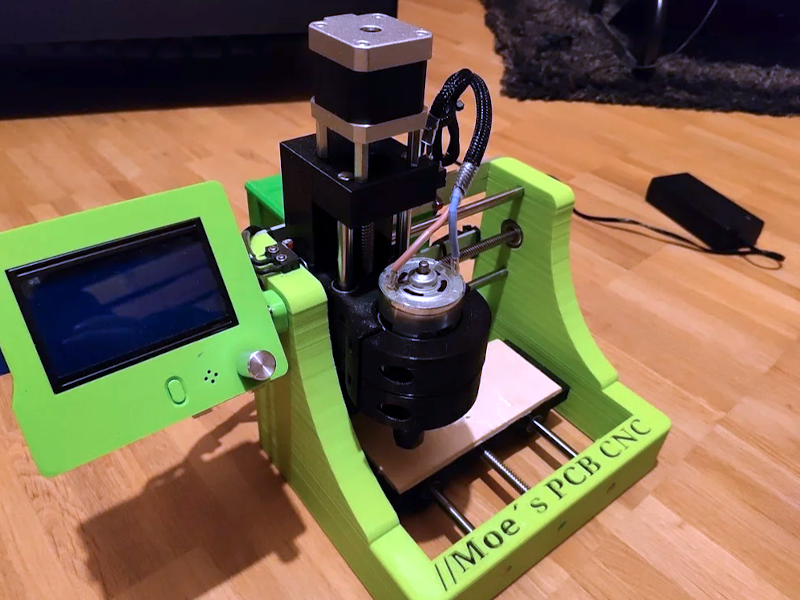There’s an old joke about the physics student tasked with finding the height of a building using a barometer. She dropped the barometer from the roof and timed how long it took to hit the ground. Maybe that was a similar inspiration to [Moe_fpv_team’s] response to the challenge: use a 3D printer to create a PC board. The answer in that case? Print a CNC mill.
[Moe] had some leftover 3D printer parts. A $40 ER11 spindle gets control from the 3D printer software as a fan. The X, Y, and Z axis is pretty standard. The machine can’t mill metal, but it does handy on plywood and fiber board and should be sufficient to mill out a PCB from some copper clad board.
It would probably be possible to beef up the design by using rods larger than 8mm. Of course, you could just attach a spindle or even a rotary tool to a 3D printer, but the fact that the machine uses leadscrews on all axes should make it better at forcing its way through the material even if it is a little slower.
If you need a tutorial on how the process works, we’ve got you covered. If your setup isn’t robust enough to cut through copper, maybe you can just cut through the resist and etch.
















Oh, there were so many other good answers to that quiz. My favorite was “take the barometer to the superintendent and say, ‘I will trade you this shiny new barometer if you tell me the height of this building.’”
That would be the business person’s method right?
How many of these can we come up with?
I’ve got one for a mathemetician.
Measure the height of the barometer. Place it on the ground and measure the length of it’s shadow to get the angle of the sun.
Measure the building’s shadow and apply trig.
+1
That was my favorite answer as well followed by tie a rope to the barometer and lower it to the ground the length of rope now equals the hight of the building. If you drop the barometer you still have to have a way to time it falling.
I remember reading a satirical Saturday Review essay that contained that and other answers, sometime about 1960.
Didn’t get enough barometer jokes last week, I guess. https://hackaday.com/2021/02/19/practical-sensors-the-many-ways-we-measure-heat-electronically/
Some jokes need repeating, frequently maybe? :)
We’re under a lot of pressure to getting these jokes out.
Add a fan to the spindle head, then it can blow the dust away as it cuts. :D
The bar is never too high for me to be punny.
That one tickles my psiche.
Science /is/ about repeatability, after all.
I would not call this “the hard way”. Maybe it requires more complex tools than etching, but it also solves more problems: You can easily drill holes for THT and vias with the CNC machine,cut out the board even with complex shapes, and it will also be easier to create two-sided PCBs with properly aligned sides. I am doing this also and actually prefer it a lot over etching.
How about conductive ink in a plotter? Is conductive ink not conductive enough?
Steven, conductive ink is less conductive than copper, yes. It’s also much less heat-resistant, so it’s difficult to reliably solder to, which limits its utility for home made PCBs.